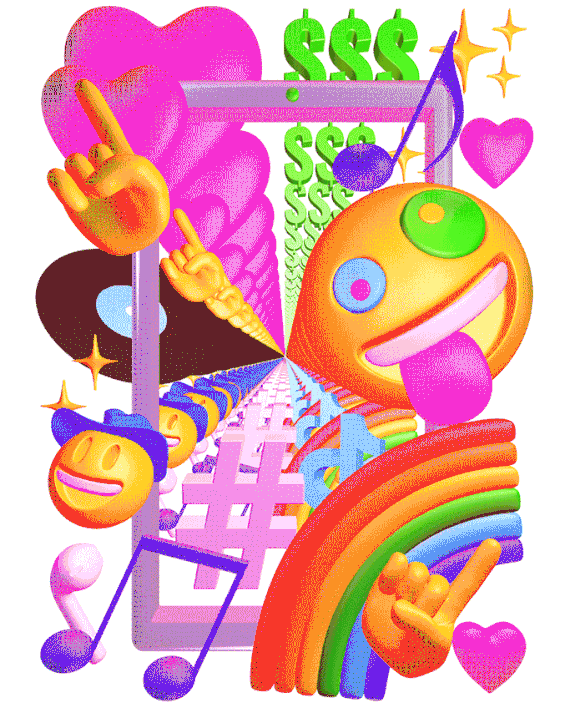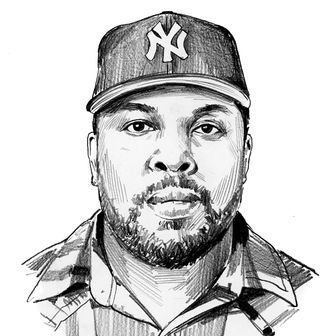
The No. 1 song in the U.S. right now — Disney Channel star Olivia Rodrigo’s “Drivers License,” an archetypal 21st–century sad piano ballad — has achieved an unusual feat: It’s a debut single that reached the top of Billboard’s Hot 100 chart after its first week out, where it has remained uncontested for four weeks. The last time this occurred with any regularity was in the early aughts, when the first post-show singles by American Idol winners Fantasia Barrino, Clay Aiken, Carrie Underwood, and Taylor Hicks arrived to nationwide attention after weeks of exposure to the prime-time audiences of one of the most-watched shows on television. It takes a big media apparatus to propel a new artist to the forefront of the American streaming charts. What gave Rodrigo the juice? Are people simply that enthralled with her work as Nini from Disney+’s High School Musical: The Musical: The Series?
Powering “Drivers License,” a morose but also off-puttingly placid song about a breakup, is, in part, juicy gossip. Some fans think the song is a shot at the 17-year-old actress-singer’s co-star Joshua Bassett, who never publicly claimed to have dated Rodrigo but has recently been seen with actress-singer Sabrina Carpenter, whose new song “Skin” is rumored to be a reply to Rodrigo. More crucial to its success has been its embrace on TikTok, where pop culture and current events get memed into absurdity. In early January, an enterprising TikTok user posted a video miming the moment in Rodrigo’s original video where she dramatically falls in an open field. As the song’s chorus gives way to a soaring bridge, the person magically appears in eveningwear for kicks in the same way Rodrigo’s video wardrobe changes. In under a month, the clip has garnered a million likes and hundreds of copycats and parodies.
Ever since 2016, when the southern rap duo Rae Sremmurd’s “Black Beatles” reached No. 1 — aided by the noise created by the Mannequin Challenge, in which people froze in place while the song played — runaway success on the Billboard Hot 100 has often come to the performers (and the fandoms) best able to weaponize the power of social media. The militant diligence of Beyoncé’s Beyhive and BTS’s Army has assisted in earning impressive sales for their patron artists. But something different is happening on TikTok, where old Fleetwood Mac hits and videos identifying the samples in decades-old rap songs are just as likely to blow up on the charts as tracks that might be heard on Top 40 radio. A number of the most-heard songs of the new decade rose along with a TikTok challenge. The randomness and openness of taste in our era of warring streaming services, where you’re always just a click away from hours and hours of notable digital media, make what proliferates through the app something of a grab bag. Still, there are through lines. TikTok makes it easier for people to surface their own videos by indexing hashtags and song selections and by prominently displaying usernames so that proper attribution isn’t lost when your content is reposted elsewhere on the internet. It behooves a savvy user to employ these tools to increase visibility. It stands to reason, then, that TikTok challenges pop not just off the strength of cool hunting or conformity but also because the app literally rewards this behavior.
The most memorable example of this is Lil Nas X’s 2019 hit “Old Town Road,” a beautifully hollow song full of cowboy-style signifiers whose earliest stirrings came from a TikTok gag where its rewarding beat drop makes cowboy clothing appear on the user, embracing kitsch and caricature in ways the song only lightly suggests. In a matter of months, what had started out as a joke about blue-collar fashion commanded the ears of kids across the country; by October 2019, it became the fastest song in RIAA history to reach diamond certification. The whirlwind success of “Old Town Road” tells us a bit about the kind of song best suited to blow up on TikTok. A buoyant beat, deeply descriptive or else instructional lyrics, and a swell of emotion are often all it takes. Choreography challenges reward breezy dance-pop or brash hip-hop tracks. A single bracing lyric can put a comedy video over the top. The absolute drama of a slow, sad song is a veritable buffet for prospective actors. As TikTok solidifies itself as a kingmaking promotional tool and a rung on the ladder to music superstardom, the songs that best lend themselves to memeing are becoming the songs that rise the highest on the charts.
There is no single, unified TikTok sound, and the attention of the app is just as likely to fall on an artist or a song that we already know as one we’ve yet to get to know. A dance challenge created by TikTok user Keara Wilson that gestures expressively to the words “classy, bougie, ratchet” helped push Megan Thee Stallion’s “Savage” to the top of the charts last year. Twenty-two-year-old Dallas rapper Erica Banks’s twerk jam “Buss It” is currently getting a jolt from the attention around a challenge initiated by TikTok user Erika Davila, who posted a video on January 2 in which she abruptly squats and twerks against a table when the beat drops — boosting a song that, last summer, achieved respectable but limited traction on hip-hop radio. “Streets,” a deep cut from Doja Cat’s Hot Pink, has been boosted by the Silhouette Challenge, in which participants show their curves against red backlighting to the tune of a chaotic mash-up of “Streets” and Canadian American icon Paul Anka’s 1958 standard “Put Your Head on My Shoulder” (sampled elsewhere on Doja’s SoundCloud loosie “Freak,” rereleased last year). Drake, weather vane of all things popular, took it a step further last summer with “Toosie Slide,” a song that arrived with its own prefabricated dance routine and lyrics that show how to hit it. The power to leverage TikTok to an artist’s gain is double-edged. Eighteen-year-old New Zealand producer Jawsh 685 discovered this when Jason Derulo dropped a snippet of “Savage Love” on TikTok, a song that samples the teen beat-maker’s 2019 “Laxed (Siren Beat)” without permission or credit. It went on to become a massive viral hit, gaining popularity off TikTok’s swaying, serene Culture Dance challenge last April. The ensuing battle was resolved with a record deal and fair accreditation a month later. In October, a remix featuring members of BTS hit No. 1.
“Savage Love” also shows how grating the TikTok machine and the music it propagates can be. It’s a drippy, sappy pop song with a lazy dance, gentrified reggae for Western arms and ears, and many of the videos made about it look like paltry pantomimes of Jamaican culture. Sometimes, TikTok is a clinic in the whitewashing of music and dance and the ways that mass consumption can flatten interesting art or give outsize acclaim to art that is already flat. Like early hip-hop records, which isolated and extended the most exhilarating sections of popular funk songs, TikTok strip-mines sometimes stilted pop songs for ideas. Users are recontextualizing culture and mimicking the ways they’ve seen music and video connect in the films and television shows they grew up on, a retreat into the comfort of familiarity in times when nothing seems certain and the world can turn on a dime. But the new context the videos add is not always as interesting as the original artist’s intent. Videos set to Megan Thee Stallion’s “Savage” illuminate the tendency of some TikTok challenges to cheapen what’s cool about a song. The dance and its flailing arm moves, a key component in TikTok choreography, draw attention away from the song’s core rhythm in the hands of all but the sharpest dancers. Normani hits it, as does Addison Rae; others attack it like a gamer frantically pressing buttons to achieve a combo that only marginally succeeds. Watching white fans mugging while attempting complex hip-hop routines can feel like appropriation in action. Often, they look like they’re numbly going through the motions in hopes of being seen and heard.
What do we learn from the histrionics that make a song fertile for a hundred thousand parody videos and then propel it up the charts? To be fair, TikTok is democratizing music videos in the same way blogs and YouTube shifted the field of cultural criticism, stealing a measure of control from the suits who run the industry and upending the business in a way it perhaps deserves. (To that end, this week Universal Music Group cut a deal to make its full catalogue available for use on TikTok and to compensate artists and songwriters when they make use of it.) Smart artists have taken note: Doja was ready to move on from Hot Pink last fall before “Streets” blew up. Now, she’s milking its success and doubling down on its radio play. Breaking a new artist used to be a mercenary campaign of co-signs and guest spots. Today, a single clever fan can set the ball in motion.
But it’s also clear the music being rallied behind in the largest numbers doesn’t need to be any good, only expressive. Look no further than “Mood” — Bay Area hip-hop star 24kGoldn’s song about wondering why your girlfriend is mad, which ran the Hot 100 before “Drivers License” and whose proprietary dance resembles the cloying TikTok-like moves Pete Buttigieg’s supporters used to drive Panic! at the Disco’s “High Hopes” into the ground during the 2019 Democratic presidential primaries — for proof that TikTok often elevates style over substance. These videos aren’t necessarily acts of tastemaking; like hashtags and trending topics, they’re a fast lane to likes and follows.
This isn’t to say that everyone is cynically angling for views; the user who initiated the “Drivers License” trend legitimately loves the song. In many respects, this new way of engaging with music carries the characteristics of the old. There is, as always, money in dumbing down art, and conformity continues to run culture as much as genuine innovation. Has the internet changed us, or has it only accelerated us on paths we’ve been on all along? The feats realized by “Drivers License” — a pleasant, nondescript hit that could have easily slid out on an OC soundtrack in the aughts — suggest the latter.
*A version of this article appears in the February 15, 2021, issue of New York Magazine. Subscribe Now!


